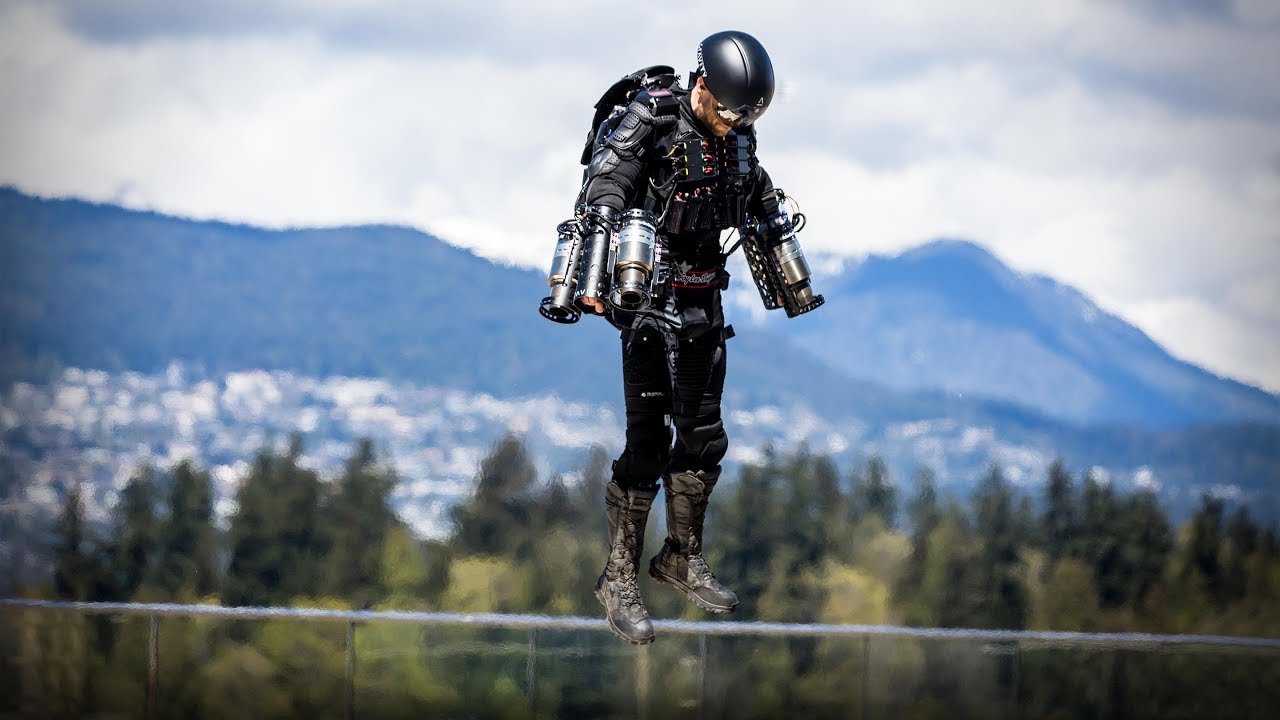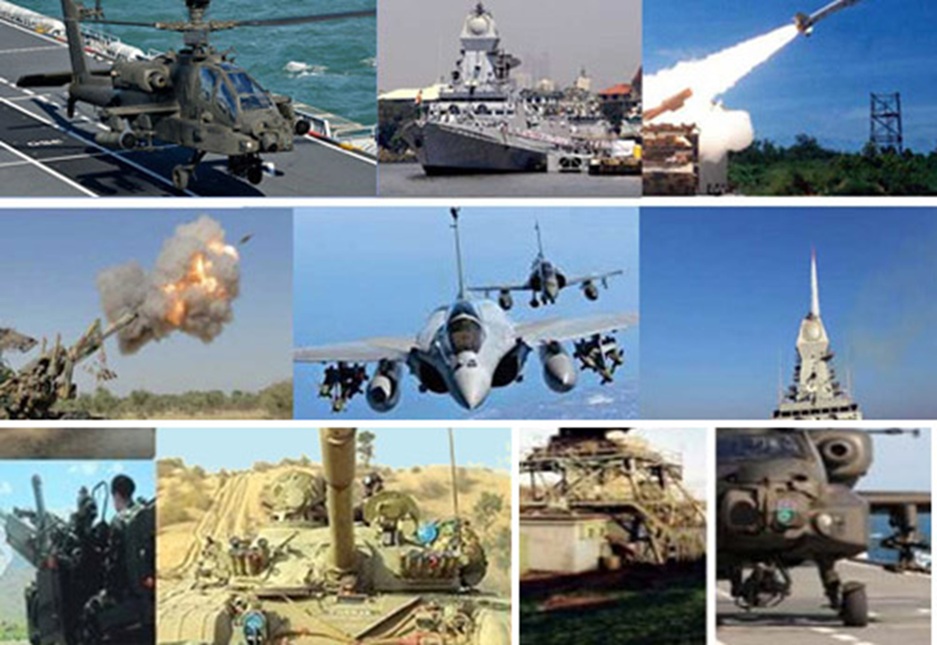A few months back, the Indian Army announced a purchase of 48 Jetpack suits under fast-track procurement. General specifications stated that the Jet-pack should weigh less than 40kg, should have a speed of 50+ kmph and payload of 80kg with 8 minutes of flight time. It should have a minimum of 60% indigenous content, a challenge to both domestic and global jet-suit manufacturers.
Jet-pack suits also known as Jet suits or jet-powered suits are wearable devices that can facilitate human flight. They are advanced pieces of technology that combine elements of aviation and personal propulsion systems. Jet suits typically consist of multiple jet engines or thrusters mounted on various parts of the body, such as the arms, legs, and back. The jet engines or thrusters generate a powerful thrust that propels the user through the air, allowing them to achieve vertical take-off and controlled flight. By adjusting the angle and intensity of the thrust, users can enable the flight as desired. These suits are often designed with a combination of lightweight materials, such as carbon fibre, to ensure durability and minimize weight. Pilots usually wear a helmet and protective gear to ensure safety during flight. A picture explaining the principle of flight is given below.

Jet suits are still in the early stages of development and are not widely available for public use. However, several companies and organizations are actively working on refining the technology and exploring its potential applications. Jet suits can have various military applications, including search and rescue operations and even transportation. They offer the ability to access hard-to-reach areas quickly and provide an aerial perspective in situations where conventional aircraft or vehicles may not be suitable.
Development of Suits
Richard Browning the founder and chief test pilot of Gravity Industries is a British creator/inventor of the “jet suit”. Gravity Industries has quoted a whooping $440,000 price per suit. The suit consumes 4 litres of ATFK fuel per minute and has an endurance of nearing 10 minutes. Can climb heights of 60 feet and can achieve speeds of 90 kilometres per hour within the safety framework. The backpack houses electronics, fuel systems and a rear jet engine. The arm assemblies house the controls—a trigger and throttle adjustment switch—and two engine clusters, one for each arm. The micro-turbines are sourced with a 40-litre fuel tank located on either side of the engine on the backpack. Jet fuel is less combustible than gasoline and is preferred for inbuilt safety.

Another firm based out of California’s JetPack Aviation (JPA) has been building and flying long-endurance jet-packs for many years now under the founder, CEO and chief pilot David Mayman. US-based jet-pack aviation has come up with a different configuration and layout as shown below freeing the arms of the flyer. This machine (JB-12) will weigh 105 lb (48 kg) gives 528 lb (2.34 kN) of thrust and is capable of speeds up to 120 mph (193 km/). He could obtain FAA certification for his machine.

An Indigenous Bengaluru-based firm is also developing a diesel-based version, which has a range of 10 km and is capable of flying for up to 8 minutes. The pack weighs 40 kg and can carry a payload of 80 kg. Though it is capable of flying at an altitude of 3,000 meters. The optimal height for flying is set between 10 feet and 20 feet above the ground. Since the requirement of such a suit exists across the spectrum, many firms around the world are designing and developing these suits tailoring to the requirements of users/ defence.
System Components and Design
Jet Engines or Thrusters and Fuel
The primary components of a jet suit are the jet engines or thrusters that generate thrust for propulsion. These engines produce a high-velocity jet of gases, typically through the combustion of fuel or by utilizing alternative propulsion technologies like electric ducted fans. The number, size, and placement of the engines or thrusters can vary depending on the design. Fuel tanks and combustion systems for jet engines or batteries and electric motors for electric-powered suits are essential elements. The power plant must be designed to provide sufficient energy for flight duration while considering weight and safety factors.
Body-Mounted Configuration
Jet suits are typically designed to be worn on the body, with various components attached to different parts. The engines or thrusters are strategically positioned to distribute the thrust and maintain balance during flight. Common configurations include engines on the arms, legs, and back, although different designs may feature alternative arrangements.
Control Mechanisms
To achieve stability and control during flight, jet suits incorporate control mechanisms. These may include hand-held or body-mounted controls that allow the pilot to adjust the throttle and direct the thrust from different engines. The pilot’s movements and body position can also contribute to controlling the flight dynamics, enabling manoeuvres such as changing direction, ascending, or descending.
Lightweight Construction
Jet suits utilize lightweight and durable materials to minimize weight while ensuring structural integrity. Carbon fibre composites are often employed due to their high strength-to-weight ratio. The suit’s construction must withstand the forces exerted during flight and ensure the pilot’s safety.
Safety Measures
Safety is paramount in jet suit construction. Pilots typically wear helmets and protective gear to mitigate the risks associated with flight. Additionally, emergency systems such as parachutes life jackets to float or other mechanisms may be incorporated to provide contingency options in case of engine failure or different critical situations.
Army Specific Applications
Jet suits have the potential to offer several applications given below.
Special Forces Operations
Jet suits can enhance the capabilities of special forces units by providing them with enhanced mobility and vertical access. Special forces personnel equipped with jet suits could rapidly navigate complex urban environments, scale buildings, or reach elevated positions with ease, granting them a tactical advantage in various combat scenarios.
Reconnaissance and Surveillance
Jet suits could be employed for reconnaissance and surveillance purposes. Soldiers equipped with jet suits can quickly survey large areas, fly over obstacles, and gain a high vantage point for gathering intelligence. This capability could be particularly useful in border control, counter-terrorism operations, or monitoring conflict zones.
Rapid Response and Extraction
Jet suits can enable rapid deployment and extraction of troops in areas that are challenging to access by conventional means. In emergency situations or hostage scenarios, soldiers equipped with jet suits could swiftly reach the target location or extract individuals, providing a valuable advantage in time-sensitive operations. Even hand-held weapons can be carried by these soldiers and expended if their arms are freed.
Urban Warfare
Urban environments are unconventional and often present complex and vertical challenges. Jet suits could aid soldiers in navigating urban terrains, such as densely populated areas or multi-story buildings. They could be used to breach structures, perform rooftop insertions, or quickly traverse obstacles, enhancing soldiers’ manoeuvrability and reducing their vulnerability.
Providing Battlefield Logistics and Medical Support
Jet suits could assist in the transportation of supplies, ammunition, or medical equipment in challenging terrain where traditional vehicles may face difficulties. Soldiers equipped with jet suits could quickly transport critical resources to remote or inaccessible locations, ensuring timely support to troops on the ground.
Naval Applications
Maritime Vessel Boarding Operations
Jet suits could be employed during maritime boarding operations, where naval personnel need to quickly board and secure vessels at sea. Jet suit-equipped sailors could swiftly traverse the gap between ships/warships or perform rapid boarding manoeuvres, enhancing their speed and agility in the process.
Search and Rescue
Jet suits could be a valuable tool for maritime search and rescue operations both day and night. Naval personnel equipped with jet suits could conduct aerial searches, cover large distances quickly, and locate and rescue individuals in distress at sea. The manoeuvrability and speed provided by the jet suits could significantly improve response times and enhance rescue capabilities.
Ship Inspections and Maintenance
Naval vessels require regular inspections and maintenance to ensure their operational readiness. Jet suits could facilitate access to areas that are difficult to reach, such as high or confined spaces on the ship’s exterior. By using jet suits, naval technicians or inspectors could efficiently conduct inspections, repairs, or maintenance tasks, minimizing the need for complex scaffolding or equipment.
Harbour and Port Security
Jet suits could be employed in port security operations, allowing naval security personnel to monitor and patrol large areas quickly and effectively. By using jet suits, naval security teams could respond rapidly to potential security threats, enhance situational awareness, and deter unauthorized access to sensitive areas within ports. Launching choppers for similar operations would be laborious and expensive.
Naval Special Operation
Like army Jet suits could find utility in naval special operations scenarios. Special forces units equipped with jet suits could perform covert insertions or extractions from maritime environments, such as coastal areas, offshore platforms, or vessels. The ability to quickly access challenging locations and navigate maritime obstacles could greatly benefit special operations missions at sea.
The Flying Bike
The flying bike could become a disrupter for jet suites. The XTURISMO hoverbike is developed by a Japanese startup AERWINS Technologies. Star Wars inspired it and it is “a manifestation of the dream of air mobility.” The bike operates with two large central rotors powered by a 228-hp gas-powered Kawasaki motor, an engine designed for motorcycle competition. Four smaller fans on the vehicle’s outer edges are powered by electric motors to provide stability. The 12-foot-long bike can fly for 40 minutes and reach speeds of up to 62 miles per hour.

Way Ahead
Since military applications are complex and vast across the spectrum, customising the suits specific to each application is a big challenge for the manufacturers. Undertaking trials and test flights for different applications should be done within the safety framework to avoid fatality. There is a huge market for jet suits in civil applications too. Very less indigenous firms are currently engaged in the design and development of these flying machines. There is a huge opportunity for our academia and startups to explore different variants of flying bikes and jetsuits tailoring to the requirements of various military and security applications.







